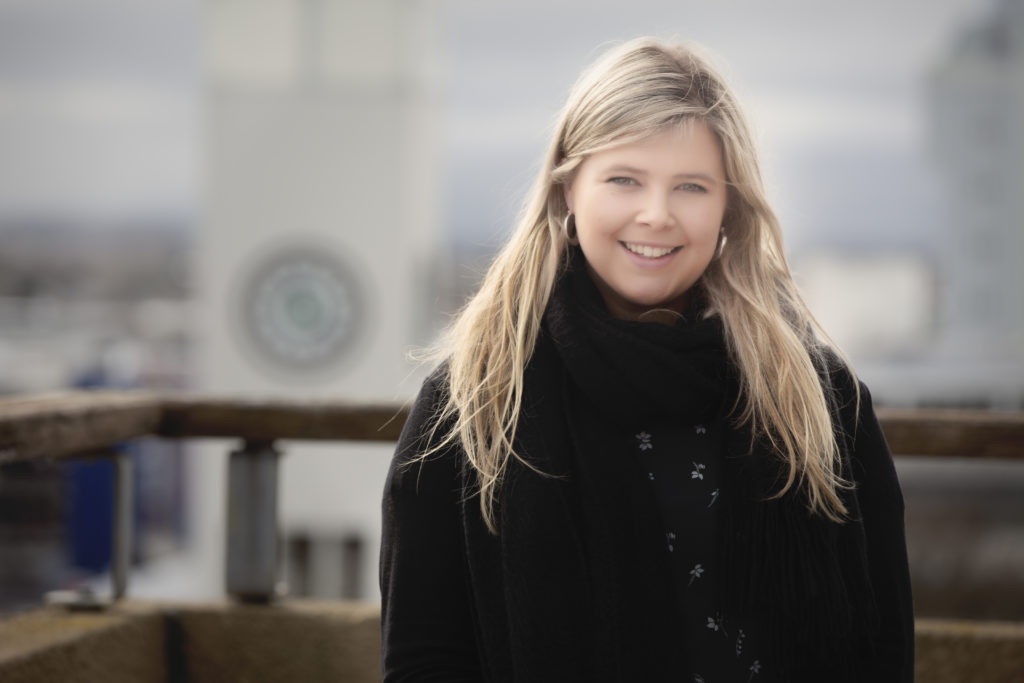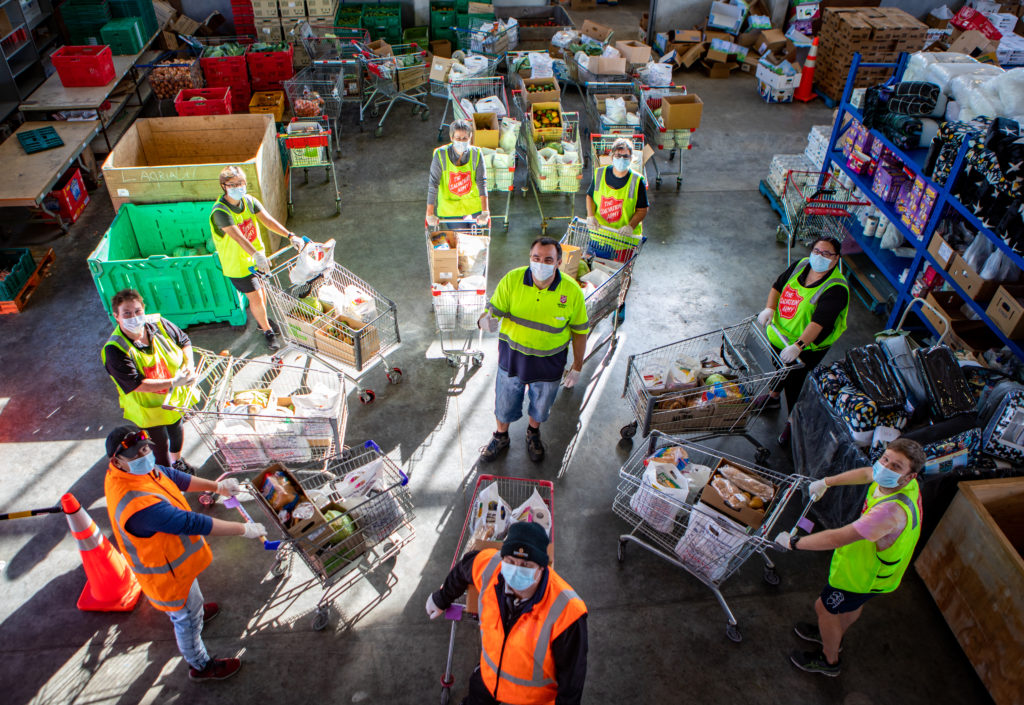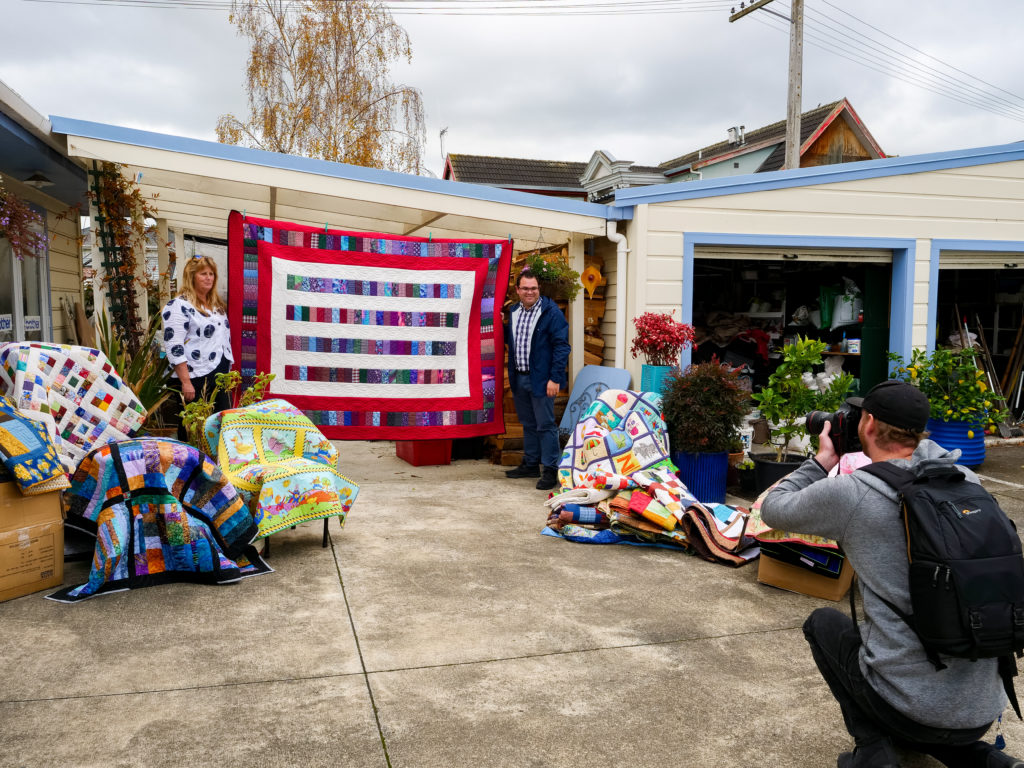During the COVID-19 pandemic we are sharing the stories and experiences of communities in the Welcoming Network that are implementing inclusive emergency response and inclusive recovery strategies. Below is an interview with Stephanie Velvin, Welcoming Communities Coordinator at Palmerston North City Council (part of Welcoming Communities, led by Welcoming International’s Founding Member Immigration New Zealand).

Has your role been impacted by the COVID-19 pandemic? If so, how?
I was redeployed to our local Civil Defence Emergency Operations Centre (EOC) throughout our COVID-19 response, from mid-March to the end of May, managing the welfare function. We were responsible for ensuring that the welfare needs of everyone in our community were being met during this time, including access to food and other household goods and services, access to accommodation, access to medication, and other day-to-day needs.
Since returning to my Welcoming Communities Coordinator role in June, I have been helping our community navigate this “business as new” environment, which has included advice on accessing COVID-19 recovery funding, getting back on track with activities and events that were postponed during lockdown, and finding ways to re-establish connection in the wider community.
What did preparing for an inclusive emergency response look like in Palmerston North?
We made the decision to build our welfare team in the emergency response around our PNCC community development team, by redeploying the whole team including our Multicultural Liaison and Pasifika Liaison roles. This allowed us to develop an inclusive, community-focused welfare response right from the start.
For example, on day one we conducted a mapping exercise identifying groups and parts of the community who we knew would be particularly vulnerable during lockdown, and the needs that they might have. For instance, for our former refugee communities (we have had approximately 1,500 former refugees resettle in Palmerston North over the last 10 years), particularly those families who were newer to the city, we needed to consider language barriers, digital access challenges, and a possible lack of understanding of health systems and other support services.
For international students (approximately 3,000 in the city), whilst they tend to be more tech savvy and have good levels of English, many were feeling isolated and anxious about family overseas, and many had lost income as they had been let go from their part-time jobs in hospitality or retail in the lead up to lockdown.
For our Pasifika communities (Pasifika people are those who identify culturally with the Pacific Islands, and include migrants from these nations and their descendants, who now call Aotearoa home), we needed to consider their collective community structures, how they receive and disseminate information and any existing feelings towards government welfare agencies.
In addition to our newcomer communities, we were considering our elderly community members, those living without homes, anyone immune-compromised, solo parents, people who rely on caregivers or other special support, those with addictions or mental health challenges, those who may be living with violence in the home, and other vulnerable populations.
After mapping the groups and their needs, we drew on our collective knowledge to identify the key community leaders and community-level support services for each and created a network of the one hundred or so people and groups who we then worked with to shape the welfare system for the response.
The trust that we have been able to gain with people through the development and implementation of the Welcoming Communities programme, by demonstrating that we care, that we do what we say we will do, and we understand the cultural landscape, was essential to being able to access and support the newcomer communities of the city throughout the response.
How did you engage the local community through your response?
At the front end of our welfare system, we built community leaders (informal leaders of community groupings) and the community sector (formal community groups and social services) into our structure for communications (how people would know about the welfare service availability) and registration processes (how people could access the service).
In a nutshell, we created a channel for community leaders to submit welfare need registrations, both individual and in bulk, on behalf of members of their community who might otherwise have trouble accessing help due to language, technology or other barriers. To implement this, as mentioned earlier, we drew on a network of community champions, which included some of our Welcoming Communities Advisory Group members, who we engaged with regularly throughout the response via email, zoom and over the phone to ensure that we were meeting needs appropriately.
What has the impact of your COVID-19 response been?
Over the two months of operation, we received around 5,500 registrations for assistance, including those from community leaders in 65 different community groups, representing about 20% of total registrations.
In addition to operating this welfare needs registrations and response system for individuals, in the inclusivity space we also supported the Manawatū Multicultural Council to prepare some activity packs for children, provided personal protective equipment to a number of groups with more vulnerable individuals, including those working with former refugees, and, when we moved in to Level 3 which had more relaxed rules around movement, supported the Manawatū Muslim Association to prepare hot community meals that they distributed as part of Ramadan.
Now that we are several months post-lockdown, we can see that many of the relationships formed and strengthened during the response (internally within Council, between Council and community, and between community groupings) have continued into our recovery phase.

How has your background in welcoming work impacted your work on the “frontlines” of COVID-19 response?
The key thing that carried over from my usual Welcoming Communities Coordinator role were the relationships I have formed with community and stakeholders over the last two and a half years. The trust that we have been able to gain with people through the development and implementation of the Welcoming Communities programme, by demonstrating that we care, that we do what we say we will do, and we understand the cultural landscape, was essential to being able to access and support the newcomer communities of the city throughout the response. We knew the community structures, we were able to quickly identify potential challenges and we had the existing rapport and cultural competence to be able to deliver.
It was also helpful having had the prior experience of building something up from a blank slate, planning at a community-wide scale, and operating from a place of empathy, which have all been features of working in this welcoming space.
What steps are you taking towards inclusive recovery?
One silver lining of the lockdown was that it was timed reasonably well for a pause in our Welcoming Communities programme. Our Welcoming Plan 2018/2019 had expired, and we had just had our first re-drafting workshop with the Advisory Group at the end of January. In February, we had applied for our Established Welcoming Community accreditation from the Ministry of Business, Innovation and Employment (MBIE), and then our next Advisory Group workshop in March had to be cancelled, so we were not too far into our new Plan development before COVID-19 hit.
Following lockdown, we received our accreditation, and we have now restarted our Advisory Group workshopping. This timing has allowed us a break to really reflect on what was working well in our implementation before, what we might like to differently in this recovery environment, and to incorporate our accreditation report feedback into our new Plan.
We are fortunate that our central government agencies have been inclusive in the recovery space, and this has flowed down into our local community recovery, for example, there are many funding opportunities for new initiatives, and there is continued welfare support available for migrants and international students.
Would you like to share any examples of inclusive narrative from Palmerston North?
One of the first welcoming initiatives we rolled out post-response was our #PalmyLegends campaign to celebrate World Refugee Day. Whilst we normally have a small communications campaign and large celebration event, as World Refugee Day falls in June we did not have time to organise the event this year. Instead, we decided to focus on an online campaign to highlight the contributions of former refugees who continued as essential workers during lockdown. We interviewed and photographed three people of refugee background in the community, and over the World Refugee Day weekend, shared their stories over our main Palmerston North City Council Facebook page, our Welcoming Communities specific Palmerston North – City of Cultures Facebook page, and our website. You can see them on our Facebook page (search #PalmyLegends).
The campaign generated hundreds of engagements, and the community response was overwhelmingly positive. We have found that connecting inclusive narrative to a person in the community, where we can share their story with a photo or a video, will always land better than just making a statement about the concept alone.

